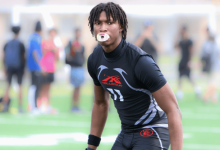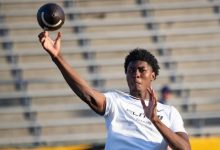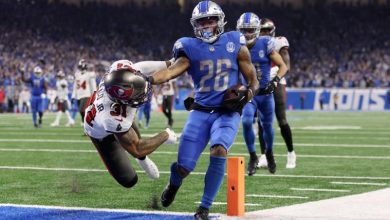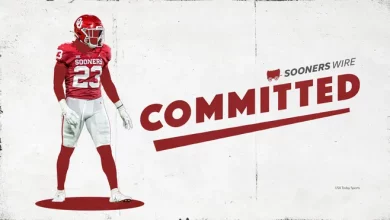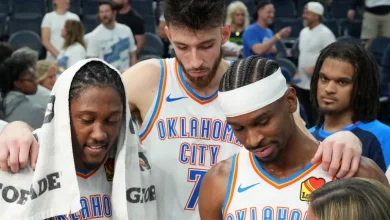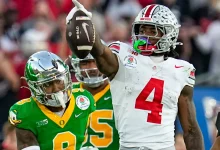“Wishbone”: New ESPN Documentary Unpacks the Deep-Rooted DNA of Oklahoma Football.
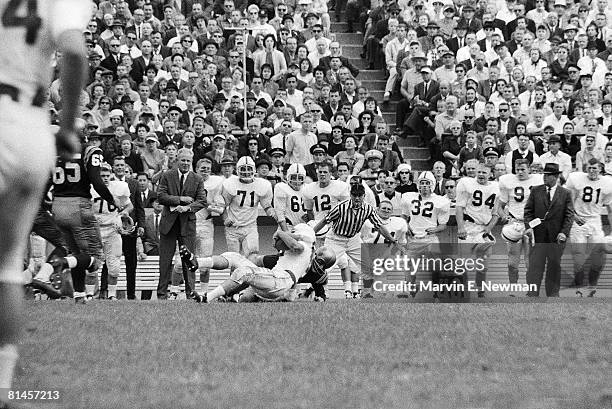
The Oklahoma Sooners have long been a cornerstone of college football, a program rich in tradition, dominance, and innovation. From Bud Wilkinson’s glory days to Bob Stoops’ championship runs and Lincoln Riley’s high-powered offenses, Oklahoma’s gridiron legacy is woven into the very fabric of the sport. Now, ESPN’s newest documentary, Wishbone, seeks to capture and celebrate that legacy by tracing the DNA of Oklahoma football—one steeped in hard-nosed grit, relentless execution, and, most iconically, the revolutionary offensive scheme from which the film takes its name.
Premiering this fall as part of ESPN’s “30 for 30” series, Wishbone is more than a nostalgic reel of past triumphs. It’s an in-depth look at how a single offensive philosophy came to define an entire program’s identity—and how its echoes continue to shape Oklahoma’s football culture to this day. With interviews from former players, coaches, rivals, and historians, the film paints a vivid portrait of how the Sooners’ adoption of the wishbone offense in the early 1970s not only changed their trajectory but reshaped college football itself.
The documentary opens with a cinematic montage: overhead shots of Owen Field, the crackle of old radio broadcasts, and the thudding rhythm of a triple-option offense slicing through confused defenses. Narrated by Emmy-winning actor and Oklahoma native Timothy Olyphant, the film plunges viewers into a pivotal era in Sooner history—a time when the program had fallen from its post-Wilkinson heights and needed a jolt to reclaim its throne.
That jolt came in the form of the wishbone offense, a ground-and-pound system popularized by Texas but perfected in Norman. Under the guidance of head coach Chuck Fairbanks and offensive coordinator Barry Switzer, Oklahoma installed the wishbone in 1970, unleashing a rushing attack that confounded opponents and rewrote the record books. By 1971, the Sooners led the nation in total offense and rushing yards per game, and the era of the modern Oklahoma dynasty had begun.
Switzer, now 87 and still sharp as ever, is the documentary’s emotional center. His recollections—equal parts swagger and sentiment—anchor the narrative. “We didn’t just run the wishbone,” Switzer says in one clip. “We made it sing.” That melodic metaphor becomes a recurring motif, emphasized through archival footage of lopsided wins and practice-field innovations. The viewer watches as quarterbacks like Jack Mildren and Jamelle Holieway master the art of the pitch, reading defenses in real time while linemen plow forward with precision.
Wishbone also captures the cultural impact of Oklahoma football during that era. Through interviews with alumni and fans, the film shows how Saturday game days in Norman became near-religious experiences. Tailgates turned into family reunions, and the team’s punishing style of play mirrored the blue-collar ethos of the state itself. “You had oilmen in cowboy boots and farmers in John Deere hats, all yelling ‘Boomer Sooner’ in unison,” says one interviewee. “The wishbone wasn’t just a formation. It was who we were.”
A particularly moving section of the documentary focuses on the 1975 national championship team, which embodied the apex of the wishbone era. With Joe Washington and Billy Sims running wild, Oklahoma bullied its way to the top of the college football mountain. But the film doesn’t shy away from the controversy that followed. The Sooners’ dominance sparked criticism from media and rivals alike, some of whom accused the team of playing “antiquated” football in a sport increasingly dominated by pass-heavy schemes.
Yet, as Wishbone makes clear, those criticisms only fueled the fire in Norman. The film argues convincingly that Oklahoma’s identity was never about following trends—it was about setting them. In a poignant segment, legendary quarterback Jamelle Holieway, who led the Sooners to a national title in 1985 as a freshman, discusses what it meant to succeed in a system that demanded both physical and mental toughness. “You couldn’t hide in the wishbone,” Holieway says. “You had to know your reads, trust your line, and take a hit every play. It made you a man.”
Beyond the players, Wishbone dives into the philosophical roots of Oklahoma football. Switzer and later Bob Stoops cultivated a culture built on speed, discipline, and innovation. The film draws a straight line from the triple-option offense of the ’70s to the spread systems of the 2000s and 2010s, where quarterbacks like Jason White, Sam Bradford, and Baker Mayfield dazzled with quick decision-making and fearless improvisation. “The wishbone taught us how to win with what we had,” Stoops says in the documentary. “That mindset never left, even when the formations changed.”
Former rivals also appear throughout the film, adding perspective and a healthy dose of respect. Texas players reflect on the difficulty of defending the Sooners’ option attack, while Nebraska alumni speak candidly about the battles that decided conference and national titles year after year. Even Alabama’s Nick Saban makes a brief appearance, noting that Oklahoma’s commitment to a specific football identity is “something every program tries to replicate, but few sustain.”
The documentary doesn’t just look back—it also connects the past to the present. Under current head coach Brent Venables, Oklahoma has emphasized a return to physicality, discipline, and defense-first football. While the wishbone itself is long gone from the playbook, the mindset it cultivated—of precision, toughness, and execution—remains deeply embedded in the program’s DNA.
“Football evolves, but identity is eternal,” says Venables in a closing interview. “When you put on that crimson and cream, you’re stepping into a tradition that started with the wishbone. It’s about doing things the right way, the Oklahoma way.”
Wishbone concludes with a sweeping overhead shot of Memorial Stadium at sunset, the field bathed in golden light. The credits roll over a slow instrumental version of “Boomer Sooner,” and viewers are left with a sense of both reverence and renewal. The past is not a weight for Oklahoma—it’s a foundation. And as the documentary elegantly argues, the Sooners’ future is only as strong as their understanding of where they came from.
The reception to the film has already been enthusiastic. Early screenings in Norman and Oklahoma City drew large crowds, with former players and die-hard fans moved to tears by the vivid retelling of a proud era. ESPN executives are said to be considering a sequel or companion series, potentially focusing on Oklahoma’s quarterback legacy or the transition to the SEC.
For now, though, Wishbone stands as a testament to one of college football’s most enduring identities. It reminds fans—old and new—that Oklahoma football isn’t just about wins and trophies. It’s about philosophy, family, and an unyielding commitment to excellence.
As Barry Switzer says in the final minutes of the documentary, “You don’t run the wishbone unless you believe in something deeper than stats or flash. You run it because you believe in team, in toughness, in outworking the guy across from you. That’s Oklahoma. That’s who we are.”
And thanks to Wishbone, now the world knows it too.

